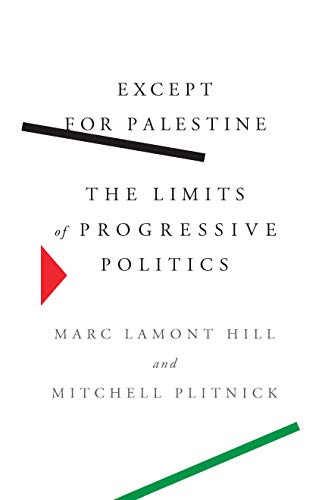Making Money: How Taiwanese Industrialists Embraced the Global Economy, Gary G. Hamilton & Cheng-Shu Kao, Stanford University Press, 2018, pp. 299, ISBN: 978-1-5036-0427-8
The global connection between American consumers and Asian manufacturers has again begun dominating the headlines. Before the current trade wars between the United States and China, Japan and South Korea suffered similar vitriol from top US officials in various administrations. What often remains unaddressed in these pronouncements are the specific policies that led to the loss of manufacturing jobs in the United States, or the West generally, and the reasons for the growing trade deficits these countries have with Asian manufacturing hubs.
On the other hand, the economic successes of these so-called “Asian Tigers” are explained away by vacuous references to specific management styles adopted in various industries or to a highly involved state which props up its domestic firms while fending off foreign capital. To say nothing of “Confucian values” guiding enlightened CEOs who treat their companies as family. The undifferentiated treatment of the five “tigers,” Japan, South Korea, Hong Kong, Singapore and Taiwan, fails to account for their unique integration in the global market. As Hamilton and Kao mention in the book, analysts claim that the tigers’ industrialization was export-led but then look inside the country to find the reasons for products going abroad.
During the past 30 years, Gary Hamilton and Cheng-Shu Kao have interviewed Taiwanese business owners and managers and traced their trials and tribulations in the global market. In their book Making Money, they tell the story of how Taiwan went from being an insignificant mountainous outpost just across Fujian to being the most prominent contract manufacturer in Asia. Taiwanese businesspeople own three of the top five and four of the top ten contract manufacturers supplying global brands with their products. Instead of focusing solely on the Taiwanese economic policy or culture, they apply the global supply chain approach, which allows them to incorporate Taiwanese development in the broader framework of post World War II capitalist transformation. In doing so, they show how the structure and the agent interacted to solidify economic relationships between Taiwan and the rest of the world.
Hamilton and Kao locate the beginnings of this global transformation in the United States. In 1954, the US changed its tax code to allow for faster depreciation for all businesses on the income-producing property in an effort to stimulate long-term investments to modernize and expand capital equipment. Instead of expanding manufacturing in the US, the result of the changed tax code was an exponential increase in the creation of shopping malls and suburbanization. Constructing malls on the relatively cheap land around the cities and the newly-built interstate highways increased the number of shopping centers from 500 in 1955 to 10000 in 1970. With many centers came the invention of the chain store, which benefitted from the repeal of price maintenance laws that protected small and independent retailers. Discount retailers such as Kmart, Walmart, and Target opened their doors in 1962, followed by CVS and Rite Aid in 1968, The Gap in 1969, Best Buy in 1983, Home Depot in 1978, Costco in 1983 and Staples in 1986.
The logistics revolution in the 1960s and the invention of the container, computers and product standardization allowed companies to become merchandisers, selling goods from factories they do not own. By outsourcing production to contract manufacturers in countries with cheaper costs, these retailers could mass purchase textiles, electronics, and toys and then sell these to consumers in the West for a mark-up. As Hamilton and Kao show, they created a global intermediate demand, which drove the global supply, the consequence of which was the slow and steady decline of American manufacture.
It is here that Tawain enters the picture. In the 1960s, Taiwan was an agricultural fulfillment center for US supply ships. With the redistribution of extensive land holdings to the tenant farmers, Taiwan grew into one of the world’s leading exporters of agricultural goods as farmers were encouraged to trade their goods to build Taiwan’s foreign exchange reserves. Japanese traders acted as the middle-men to these farmers. However, with government projects such as the Ten Great Construction Projects implemented by Chiang Kai-Shek’s son, the Taiwanese landscape began transforming. Highways, ports, and airports were built and cheap labour, which in the 1960s and 1970s amounted to $22 per month, facilitated the transition to industrialization. American retailers could provide product prototypes and specifications to, at first, Japanese and then Taiwanese trading companies who would then set up makeshift factories to produce and ship them to the US.
Taiwanese manufacturers became the leading suppliers of consumer goods for global markets between the late 1960s and 1985. The flexible production and demand-responsive production systems in Taiwan relied on production networks that disaggregated each step in the production process, allowing each contained unit to produce parts for more than one product. These production networks relied on small family units, as Hamilton and Kao show. A future manufacturer would begin his career as an apprentice, working for a member of his family with an already established business. With the increasing volume of orders, the apprentice would gather enough money from his family and employer to open their own manufacturing plant, acting to complement the business of their previous employer and plug into other networks. As the organization of the economy spread out among more and more firms, Taiwanese businesses remained either small or medium-sized. Around 98.5% of all registered firms had fewer than 300 employees. Unlike their South Korean and Japanese counterparts, which focused their production on capital intensive products, Taiwanese production remained labour intensive until 1985.
In the five years leading up to 1985, the value of the US dollar had climbed 44% against other major currencies, leading to the then deficit low of $122 billion. While other countries expressed concern about the dollar’s strength, the Regan administration largely neglected it, attributing its strength to investor confidence. This took a sharp turn on September 22, 1985 when finance ministers and central bankers convened at the Plaza Hotel in New York and agreed to depreciate the dollar in relation to the Japanese yen and the Deutsche Mark. The non-published agreement sought to devalue the dollar by 10-12 percent over the near term, with the goal of making the US exports more competitive against the Japanese and German and stabilizing the deficit.
Given the close integration of Japanese, South Korea and Taiwanese economies, the years after the Plaza Accord led to the appreciation of most East Asian currencies. In Taiwan, this came at a time of rising wages, declining profits and increasing competition for orders. However, with currency adjustments, many businesses were forced to change their location to ensure profitability. Cheap land and cheap labour were deciding factors. However, instead of contracting out the work as had happened before, Taiwanese industrialists set up fully-owned manufacturing in China. This shift proved to be the ultimate failure of the Plaza Accord, for the logic of global capitalism merely readjusted the division of labour accordingly. As Hamilton and Kao state, “declining rates of manufacturing in the United States and Europe, as well as Japan, South Korea, and Taiwan, are directly linked to the increase of manufacturing in China and other parts of the world.”
Hamilton and Kao have written an excellent exposition of the logic of global capitalism. By accounting for global transformations in the core countries, they have managed to capture the development of the periphery. Global value chains are demand-driven, and big retail merchandisers from the “developed” world drive the global division of labour. Capital prowls the world in search of cheap labour to maximize its profits, and businesspeople adjust their operations accordingly. When it became expensive to produce in Taiwan, they moved to China. Similarly, with the rising wages in China, businesses are moving to other countries such as Bangladesh, Vietnam and Malaysia. The logic of making profits will therefore continue to structure economic relations among countries.




